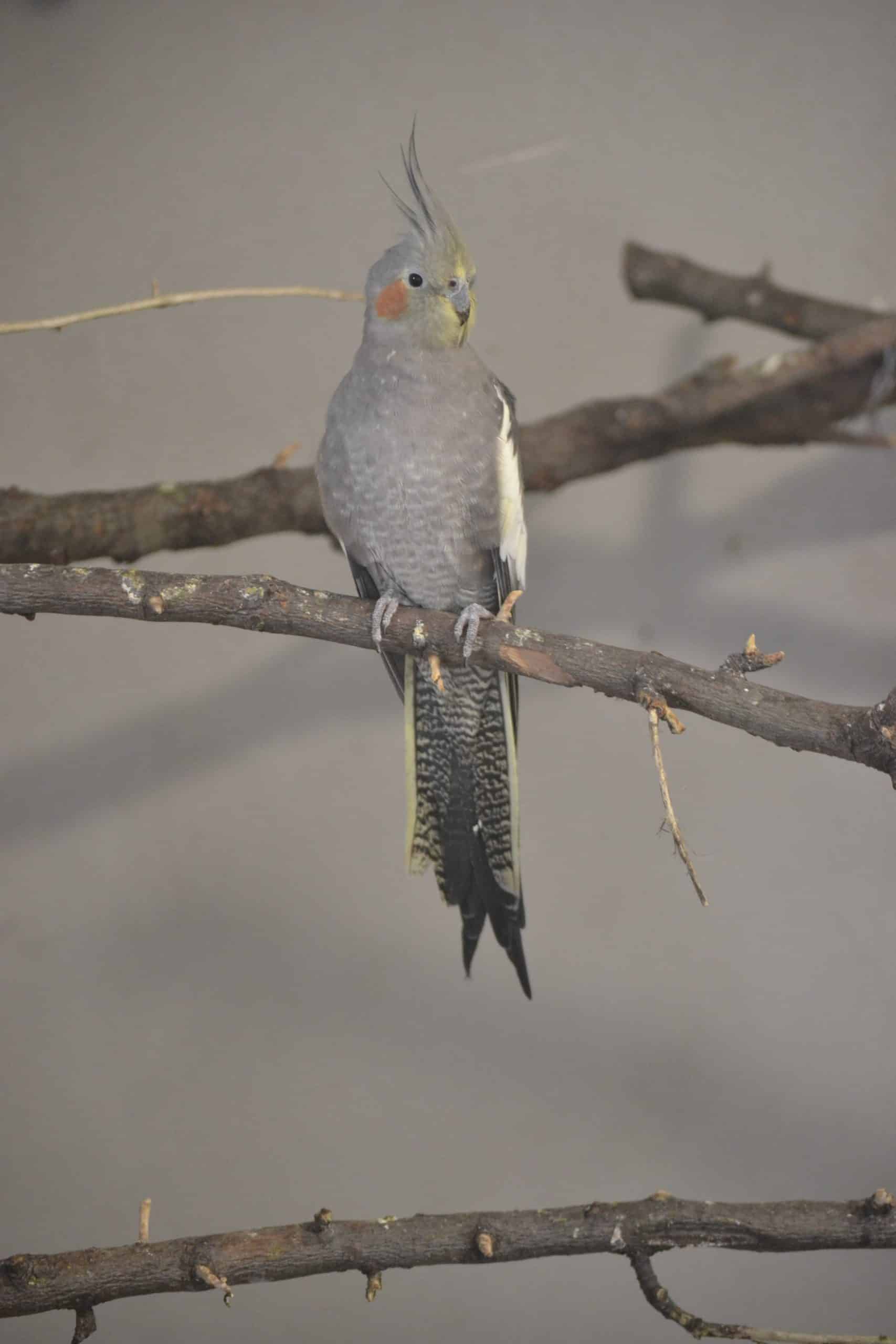The typical feature of this bird is the crest and the orange-red feathers “on the cheeks”.
The wild colour tends to be grey. The male has a yellow head and a red ear patch. The flight feathers are white, and the underside of the tail is black. The female is generally duller in colour than the male, with a greyish-yellow head and orange ear spots. The flight feathers are grey-white, and the underside of the tail is grey white transversely striped.
The young of natural colouration resemble the female.
In captivity, this bird enjoys great breeding popularity, and many colour variants have been bred: white, cinnamon, pastel, lutino, magpie, black, grey-white, and many others.
Cockatiels range throughout inland Australia, with their population depending on the suitability of food and water. It prefers savannahs, steppes, or pastures. It lives a nomadic lifestyle mostly in pairs and small groups, sometimes forming large flocks. The parents take care of the clutch and the chicks together. They take turns sitting on the eggs and feeding the chicks. The young fledge after about four weeks and can fly at the age of two months. The parents continue to feed them for 2-3 weeks after they fly out of the nest.
The longest lived individual of the cockatiel was 35 years.
A crossbreed with a galah was bred from a cockatiel.
It is an excellent flyer. Its flight is fast and straightforward, and only at the last moment, when landing on a branch, it spreads its wings to “brake”.



